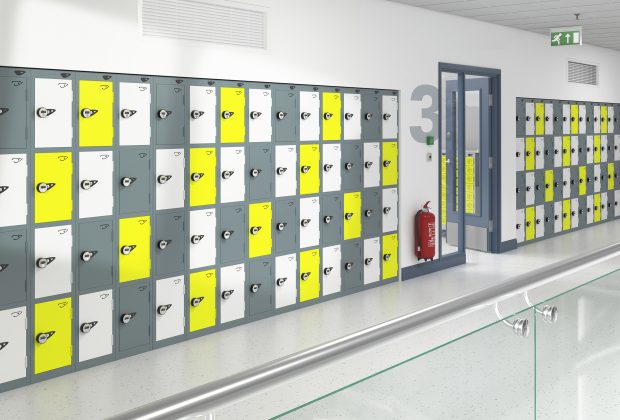Business
Enhancing Security in Student Storage Facilities

In the world of student storage facilities, prevention is better than cure. You’re tasked with securing a treasure trove of students’ belongings, from textbooks to tech, making it paramount to weave a tight safety net.
By integrating advanced locking mechanisms, surveillance upgrades, and stringent access controls, you’re not just deterring theft but also embedding a culture of responsibility and safety. Imagine the peace of mind students would enjoy, knowing their possessions are under vigilant watch.
Let’s explore the cutting-edge strategies that could transform these havens of storage into fortresses of security, sparking a conversation on why these measures aren’t just optional—they’re essential.
Assessing Potential Risks
Identifying potential risks in student storage facilities requires a thorough evaluation of vulnerabilities such as theft, damage, and unauthorized access, ensuring the development of effective security measures. You must understand that the unique setting of student storage areas, characterized by high foot traffic, shared spaces, and limited supervision, amplifies these security vulnerabilities. This scenario demands a detailed analysis to pinpoint where and how breaches might occur.
To safeguard the belongings of students, you’re tasked with dissecting each element contributing to the risk landscape. This means scrutinizing access control mechanisms, evaluating the sufficiency of surveillance systems, and the sturdiness of physical barriers. It’s not just about identifying what’s lacking but understanding how existing security measures might be circumvented.
Your strategy should lean heavily on risk mitigation strategies tailored to the specific challenges faced by student storage facilities. By conducting a thorough risk assessment, you not only highlight the gaps in current defenses but pave the way for implementing robust security solutions. Remember, the goal is to anticipate potential threats before they materialize, ensuring peace of mind for both the students and the administration.
Advanced Locking Mechanisms
To enhance the security of student storage facilities, it’s important to contemplate advanced locking mechanisms, including high-security locks such as disc locks and padlocks, which play a pivotal role in deterring unauthorized access. With the advent of technology, integrating smart locks and biometric authentication further strengthens the security of these facilities, ensuring that student possessions are safeguarded against potential threats.
Consider these strategic approaches to deploying advanced locking mechanisms:
- Implement British Standard 3621 Locks**: Ensuring that all locks meet the rigorous standards set by British Standard 3621 is essential. These locks are designed to withstand common burglary methods, offering a higher level of security for student belongings.
- Adoption of Smart Locks: Smart locks provide a keyless entry system, which can be controlled remotely. This facilitates the management of access permissions, ensuring that only authorized individuals can access the storage units. Biometric authentication can further enhance security by requiring a physical attribute, such as a fingerprint, to gain entry.
- Utilize Keyed Alike Padlocks for Multi-Unit Facilities: For facilities with multiple storage units, keyed alike padlocks simplify access for authorized personnel while maintaining a high level of security across all units.
Surveillance System Upgrades
While advanced locking mechanisms fortify the physical barriers to unauthorized access, upgrading surveillance systems provides the necessary eyes on the ground to monitor and secure student storage facilities effectively. Implementing advanced surveillance technology is a strategic move that greatly enhances security. High-definition cameras offer improved visibility and clarity, making sure that every corner of the storage area is under vigilant watch.
These upgraded systems integrate features like motion detection, which alerts security personnel to any unauthorized movement, and night vision capabilities to ensure round-the-clock surveillance. Remote monitoring stands out as a pivotal upgrade. It allows for real-time viewing and recording of activities from any location, making sure that security teams or facility managers can react promptly to any signs of breach or unusual activity. This capability not only enhances the responsiveness of security measures but also instills a sense of security among students, knowing their belongings are monitored continuously.
Additionally, the mere presence of enhanced surveillance systems acts as a powerful deterrent to potential intruders. It sends a clear message that the facility is well-protected, making it far less attractive as a target. Collectively, these upgrades form a thorough approach to enhancing security measures, ensuring student storage facilities are safeguarded against threats effectively.
Access Control Measures
Access control measures serve as the cornerstone of securing student storage facilities, ensuring that only authorized individuals can gain entry. Implementing these measures not only restricts access but also meticulously monitors who enters and exits, greatly enhancing the security of the premises.
Here are three strategic approaches to amplify the safety of student storage facilities:
- Electronic Gate Systems and Keypads: These systems utilize designated codes or cards to allow entry, ensuring that only individuals with authorized access can enter the premises. Keypads further enable the management to control entry and exit times, providing a detailed log of access activities.
- Biometric Authentication and Visitor Logs: Introducing biometric authentication adds a layer of security that’s nearly impossible to breach, as it requires unique biological characteristics such as fingerprints for access. Coupled with detailed visitor logs, it creates an indelible record of everyone who accesses the facility.
- Remote Monitoring and Alarm Systems: Incorporating remote monitoring allows for real-time surveillance of the facility, enabling immediate response to unauthorized access attempts. Alarm systems act as a deterrent and an alert mechanism, ensuring swift action can be taken to secure the premises.
Security Training for Staff
Equipping staff with thorough security training is a pivotal strategy in fortifying the safety of student storage facilities. By delving into programs that cover emergency procedures, alarm systems, and surveillance monitoring, you’re not just guaranteeing a box; you’re building a robust defense mechanism. It’s about transforming your team into vigilant guardians, capable of identifying suspicious activities and handling security breaches with precision.
Your team’s ability to guarantee customer safety hinges on their mastery of conflict resolution and customer service in tense situations. These aren’t just soft skills; they’re critical components in maintaining a secure and welcoming environment. Proper communication protocols, too, play a key role. They empower your staff to convey concerns effectively and coordinate responses seamlessly.
Emergency Response Protocols
Having established the importance of security training for staff, it’s imperative to focus on emergency response protocols that safeguard everyone in student storage facilities. These protocols are the backbone of ensuring a swift and organized response to any crisis, minimizing harm and ensuring safety. Let’s explore the critical components that make up an effective emergency response strategy.
- Clear Evacuation Routes and Procedures:
Make sure that evacuation routes aren’t only clearly marked but also free of obstructions. Regular drills reinforce the importance of these routes, making them second nature in an emergency.
- Staff Training on Emergency Response Actions:
Training staff in fire drills, medical emergencies, and crisis communication is crucial. They’re your first line of defense, equipped to lead and reassure others during calamities.
- Collaboration with Local Emergency Services:
Establishing a partnership with local fire, police, and medical services enhances your emergency response. It ensures a coordinated and efficient reaction when seconds count.
Emergency response plans must be accessible and communicated clearly to all users of the facility. Regular drills, underpinned by solid crisis communication and evacuation procedures, ensure preparedness. This strategic approach to emergency response protocols is non-negotiable for the safety of students and staff alike.
Regular Security Audits
To bolster the security framework of student storage facilities, conducting regular security audits is a critical step in identifying and remedying vulnerabilities. These audits involve a thorough evaluation of your facility’s security measures and protocols. You’ll find auditors reviewing the effectiveness of your access control systems, surveillance cameras, and alarm systems. This detailed security assessment helps in pinpointing weaknesses, gaps, and areas ripe for improvement in your security infrastructure.
Moreover, auditors will scrutinize your security policies, procedures, and staff training programs to make sure they meet industry standards. It’s not just about having the right tools in place; it’s also making certain that your team is well-prepared and your policies are up to date. This strategic approach is essential in creating a robust defense against potential security threats.
The ultimate goal of these regular security audits is to enhance the overall security posture of your student storage facilities. By identifying vulnerabilities and implementing targeted improvements, you’re not just mitigating risks; you’re actively contributing to the safety and well-being of your student community. Remember, a secure facility isn’t just about preventing theft or vandalism; it’s about ensuring peace of mind for everyone involved.
Conclusion
In wrapping up, remember that an ounce of prevention is worth a pound of cure.
By meticulously evaluating risks, upgrading locks, enhancing surveillance, refining access controls, training staff rigorously, establishing clear emergency protocols, and conducting regular audits, you’re not just securing belongings—you’re safeguarding peace of mind.
It’s a strategic, detailed approach that transforms student storage facilities into fortresses of security.
Stay vigilant, stay prepared, and you’ll make certain that safety is never an afterthought.






















